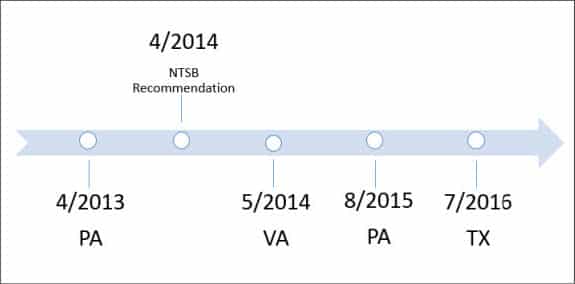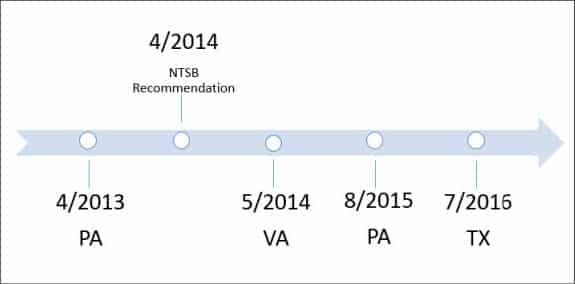[suffusion-widgets id=’1′]
Two days ago, the worst hot air balloon accident in U.S. history occurred in Texas, just outside of Austin. A record breaking 16 lives were lost; no survivors were found. The accident is believed to have occurred due to contact with power lines which caused the balloon to catch fire. This recent hot air balloon accident is one of dozens over the last decade. Get more info about the hot air balloon accident in Texas.
Commercial Sightseeing Tours – Hot Air Balloons Are the Most Dangerous
When compared with helicopter rides and fixed wing (airplane) sightseeing rides, hot air balloons account for the most accidents. According to a 2011 report issued by the National Transportation Safety Board (NTSB), hot air balloons accounted for about half (68) of the total accidents (140) over a ten year period, 2000 to 2010. In addition, the NTSB concluded that hot air balloons produce “very high accident rates,” when comparing the flight hours for balloon sightseeing activities over the 10 year period.
Despite the hazards hot air balloon accidents pose, the Federal Aviation Administration (FAA) does not regulate these activities to the same degree as helicopter or airplane sightseeing activities. What’s particularly troubling is that in 2014, the NTSB recommended tighter regulations for hot air balloon operators. However, the FAA did not implement them. Since then, there have been several hot air balloon accident deaths. Here’s a look at the timeline (see below for a brief summary of each accident).

A Look at Recent Hot Air Balloon Accidents in the U.S.
2015 – Pennsylvania Hot Air Balloon Accident (Power Lines)
In August 2015, a hot air balloon struck power lines after landing in a field in New Holland, Pennsylvania, outside of Lancaster, west of Philadelphia. Just as the balloon landed, the top blew onto nearby power lines. As a result, three individuals suffered electric shocks. Two of them were unresponsive when local emergency responders arrived on the scene. One of the balloon’s passengers was in cardiac arrest. No fatalities were reported.
2014 – Virginia Hot Air Balloon Accident (Power Lines)
In May 2014, a hot air balloon accident in Virginia claimed three lives, the pilot and two women who were employed by the University of Richmond. According to the NTSB, the balloon struck power lines as it approached the landing site. The balloon basket and envelope caught fire, killing all three occupants.*
2013 – 4 Colorado Hot Air Balloon Accidents in One Day (Windy Conditions)
In June 2013, 4 hot air balloon accidents were caused by extremely high winds in Colorado. The weather conditions caused at least one balloon to come into contact with power lines. Fortunately, there were no fatalities.
2013 – Pennsylvania Hot Air Balloon Accident (Windy Conditions)
In April 2013, a hot air balloon collided with trees during a landing in windy conditions. The accident occurred in Chester Springs, Pennsylvania, about 40 miles outside of Philadelphia. There were 10 passengers on board, of which 3 were seriously injured. Subsequent investigation showed that during the landing, the burner switch was activated. This resulted in a propane flash causing serious injuries to 3 of the passengers.
Chester Springs, Pennsylvania seems to be a hotbed for hot air balloon activities and accidents. This is due to the geography of the area which is particularly favorable for sightseeing in a hot air balloon. Multiple hot air balloon operating companies provide rides throughout the year, and each year, the county hosts a large hot air balloon festival. However, with the level of hot air balloon activities, there are also accidents. In 2008, a hot air balloon pilot was killed and seven passengers injured after the balloon burst into flames during an unscheduled landing in Chester Springs.
The reality is that sightseeing on a hot air balloon is an inherently dangerous activity due to the lack of safety equipment coupled with the nature of the activity itself – flying hundreds of feet in the air with no protection. Hot air balloon operators must have proper flight plans in place to prevent accidents that occur due to contact with power lines and those that occur due to windy conditions.
*LBK attorneys successfully represented one of the victims of this hot air balloon accident.

